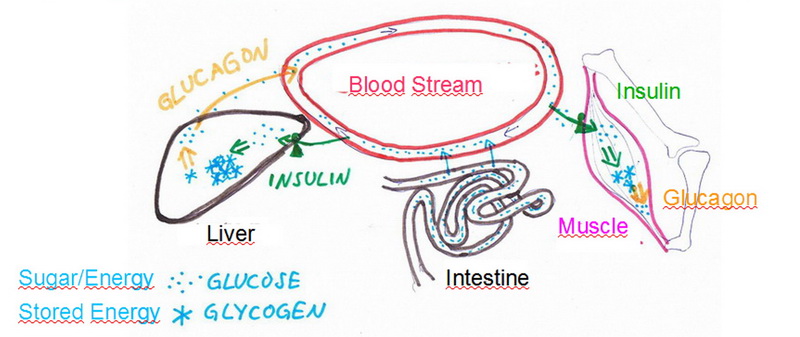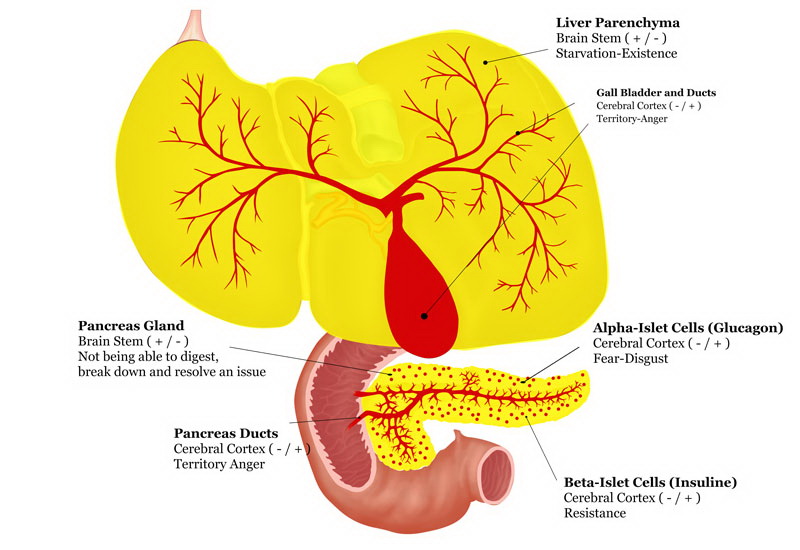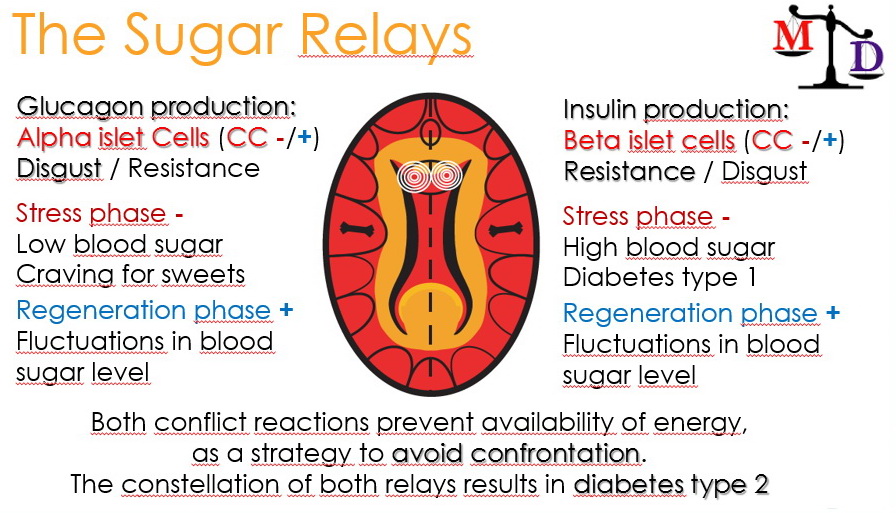Diabetes is epidemic in India.
- How can this be explained in META-Health?
- How is the social pattern?
- What are possible solutions?
These questions were ventilated in a panel discussion with Dr Kwesi Anan Odum, Dr Anu Mehta, Dr Jyoti Lalwani, Kavita Freedom and Richard Flook on the META-Health Conference in Mumbai, 2017.
Physiology of Reluctance
A disruption of rhythm that entails a strong feeling of dislike, provokes a metabolic reaction in the body, in that the production of the hormones insulin or glucagon in the islets of Langerhans in the pancreas gets reduced. Which hormone is affected, depends on the quality of emotion and hemispheric dominance (i e handedness) of the affected person.
This draft illustrates the biochemical mechanisms:

The human sugar balance as a background for cravings
Put simply, ingested food is broken up in the stomach, and the contained energy – the glucose – is then transferred through the gut wall and into the blood. Blood is the medium by which the dissolved sugar is transported to places of consumption, like muscles, and of storage, like the liver. Muscle cells however can only take up the energy by utilizing an infiltration mechanism, in which insulin plays a key role: it activates carrier proteins that permit diffusion of glucose through the cell membrane.
In muscle cells and especially in the liver, glucose is also transformed into it’s storage form called glycogen. This is needed to maintain energy availability even when no food is entering the system. The transformation back into transportable glucose is carried out with the help of glucagon, the counterpart of insulin. For the functioning organism, they act as partners.
Hormone release from the islets of Langerhans happens rhythmically, the amount and required action is determined by signals: simply put, eating stimulates insulin and energy demand stimulates glucagon.
Brevity is the soul of wit
What happens in the tissue when you feel reluctant “I don’t approve” – “This is disgusting”, is inhibition of these hormones and their energy-transforming function, either into it’s transportable form (by stimulating glucagon), or into it’s availability for muscles (by stimulating insulin).
The first leads to low blood sugar and sugar cravings, the latter to remaining sugar in the blood as in diabetes.
Both are mechanisms to hold back energy, that are in place as long as you don’t get active! For this moment, they have created a peak of energy which you need to face confrontation with the conflict – like when cats ruffle up and hiss before a fight.
As in this example, this biological program is only useful for very short-termed resolutions. When you procrastinate longer periods, or you can’t let go of a disgusting or humiliating experience, these metabolic changes don’t make any sense and can lead to obesity or to diabetes.
Tap into your Potential!
In above panel discussion, Kavita‘s client needed to get out of his deadlock, and to actively express his anger – by that, he could bring his bottled-up energy back into flow. Anu found that she needed to stop the “dance” or the tug-of-war, and to go first, for her husband to follow. The resolution of the biological response is in accepting and handling of the situation – how you go about it is completely individual: either you dare to get loud, draw consequences, or to reevaluate the case and find an internal SoUlution.
As generally in discomfort and pain, the experience gets better manageable when you understand what caused it, know that it will end, and that it will leave you with an outlook changed for the positive.
Even a long-termed metabolic dysfunction can change when you understand their background, and you can offer and train a better strategy. A function that is not used autonomously, will fade, as does the hormone production when substiuted by artificial messengers. This does not mean you should stop medication abruptly and completely – counsel you intuition as well as your doctor, and look for the possible ways to proceed, and consider their consequences. For instance, there are various diets that are recommended, among which are the ketogenic as well as the vegetarian diet. What fits your personality and your capacity?
To overcome inner resistance, it is helpful to have a goal. Where are you bound FOR, when you LEAVE this conflict? To find your true goal, look behind your wishes and needs and see what they serve you for! This bigger picture gives you the flexibility to satisfy your wishes in new ways, that you just never had thought of before!


Learn more about Diabetes in the META-Wiki
Study how biological programming impacts mental and physical health, and become a pathfinder to well-being!
